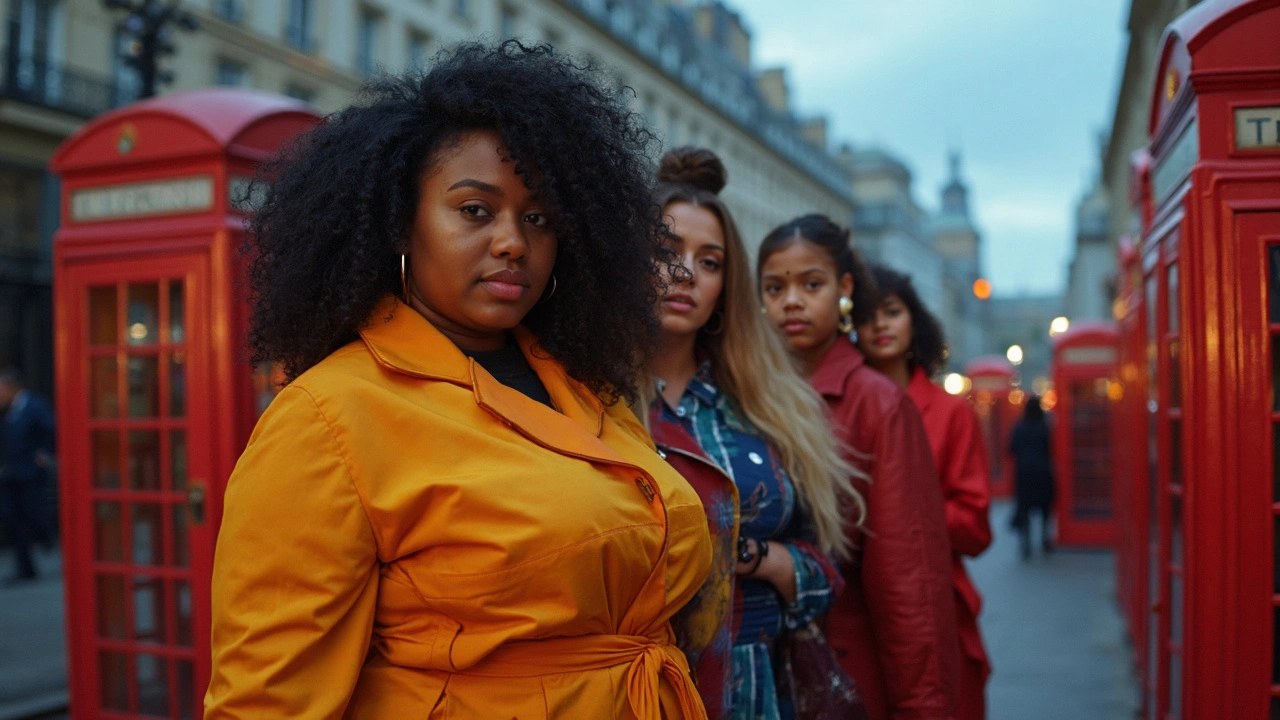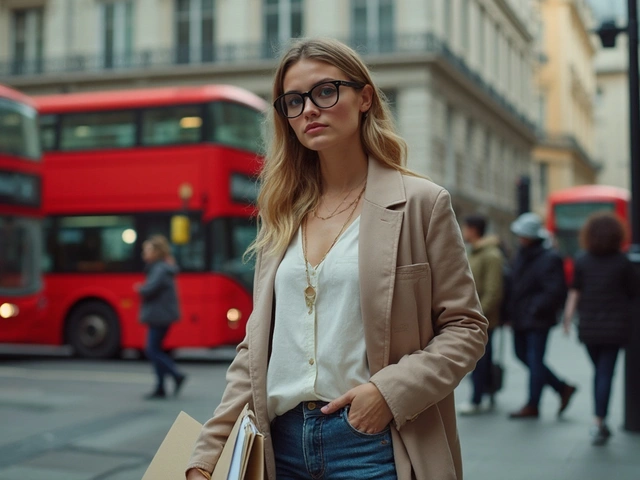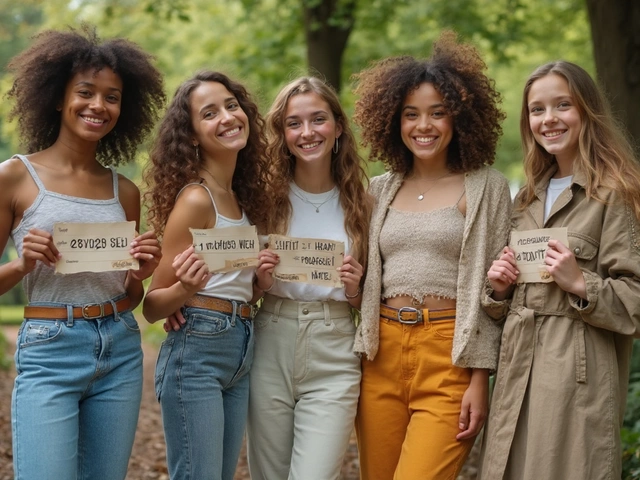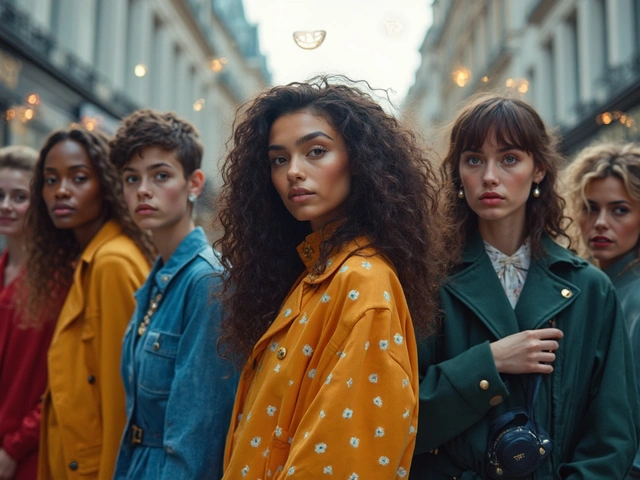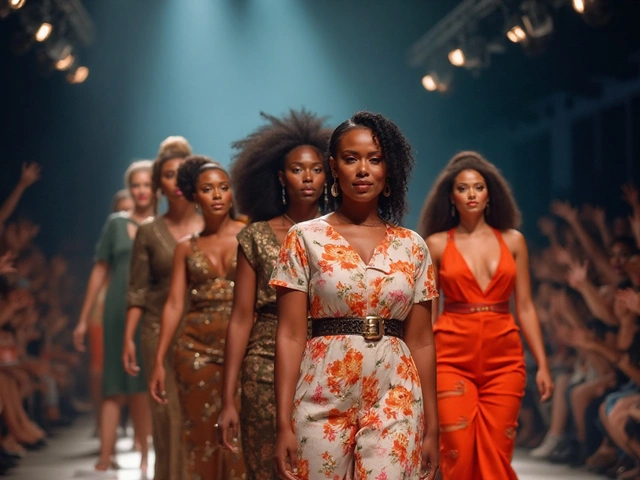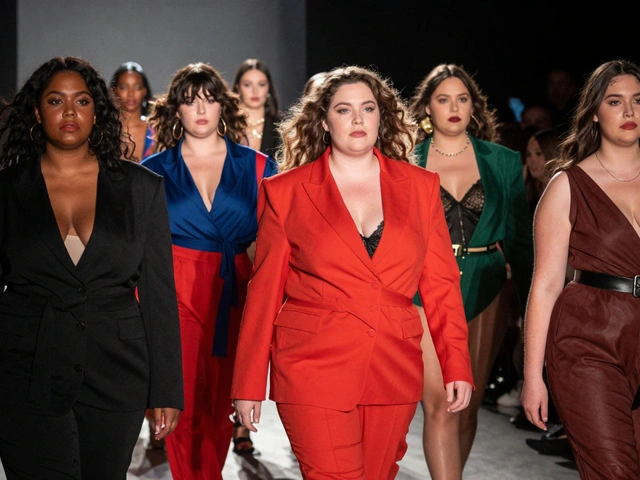If you flip through any high street fashion campaign from the last year, something isn’t quietly shifting—it’s roaring for attention. Those thin-only catwalks and picture-perfect covers aren’t the gold standard anymore. Curvy models are not just showing up; they’re front and centre, rewriting the rules of what it means to look fabulous in clothes. Remember when plus size ranges were hidden at the back of department stores? That’s fast becoming history, and the numbers back it up. ASOS reported in early 2025 that sales of their Curve range have grown by over 30% in just six months, proving that style knows no size limit. Shoppers are speaking up with their wallets, and designers are listening. Stereotypes that held the industry frozen for decades are finally cracking.
Why the Fashion Industry Clung to Outdated Beauty Norms
Fashion has always been about fantasy, but somewhere along the line, designers spun ‘aspirational’ into ‘unattainable.’ For decades, only a narrow slice of body types made it onto magazine covers and runways. This wasn’t just about aesthetics—it was also tied up with production costs, marketing, cultural influence, and even lazy habit. Slim silhouettes were cheaper and easier to sample, which made designer's lives simpler. But there’s a wild fact most people don’t know: a 2023 study from The Fashion Institute of Technology found that 68% of women in the UK wear a size 14 or above. Yet, these women saw themselves in less than 5% of mainstream print ads until 2022. This disconnect bred low self-esteem and left shoppers feeling unseen. Campaigns like #EffYourBeautyStandards, founded by Tess Holliday in London, started kicking off real conversations and pushed brands to face the music. It’s not just about feeling included. The health impact is serious—mental health charities in the UK have seen a 24% drop in calls about body image distress since more diverse ads started airing primetime in 2024. More brands welcoming curvy figures? That’s helping real people breathe easier in their own bodies.
The Rise of Curvy Models: Game-Changers on the Runway
Breakthrough moments can sneak up on you, but some flashbulb memories are impossible to miss. Who can forget the day Ashley Graham hit the cover of Sports Illustrated in 2016? Fast forward to June 2025 and it’s no longer ‘shock’—it’s expected. Models like Paloma Elsesser, Jilla Tequila, and Precious Lee are turning heads for all the right reasons. They’re mainstays for brands like Fenty, Savage x Fenty, and Versace. Even Paris Fashion Week now has at least 20% of its runway models in plus sizes, up from just 2% in 2019. Behind the scenes, agencies like Milk Management and Models1 in London are signing more curve talent every season.
Here’s the clincher: A YouGov survey from February 2025 found that 73% of British women aged 18-45 now feel “more confident” shopping for clothes “because there are models who look like me.” Londoners are leading the charge on TikTok too, racking up billions of views with #CurveConfidence tags and outfit-of-the-day reels. These women aren’t just hired for ‘diversity points’—they’re driving sales and setting trends. When Tess Daly fronted a primetime H&M campaign in March, the store’s plus-size jeans sold out in two days. Magazines finally caught up: in 2024, Vogue UK filled an entire issue with only models size 12 and above. These aren’t temporary moments or fads—they’re shaping fashion’s future.
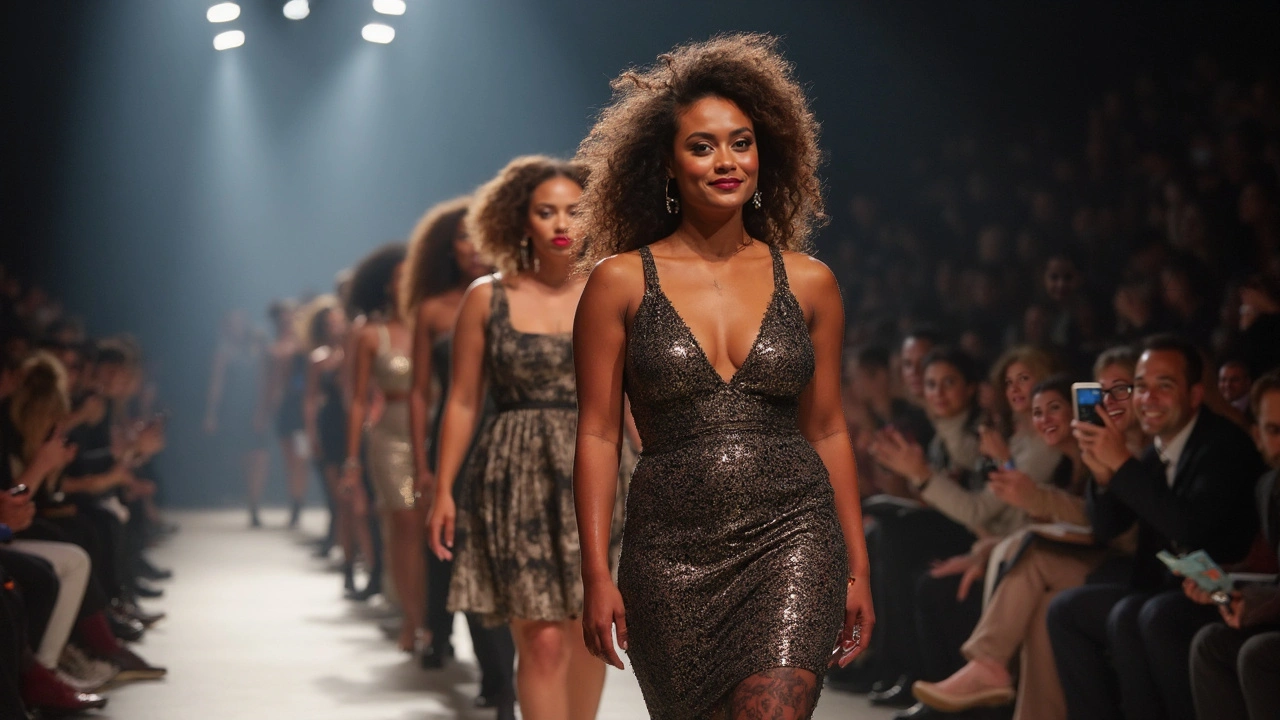
Real-Life Impact: Beyond the Runway and Ads
The impact of curvy models seeps far beyond social media buzz or glossy campaigns. There’s a ripple effect happening in offices, schools, and nightclubs from Manchester to Brighton. A 2024 YMCA study of teenagers in England showed a 19% drop in reported body dissatisfaction in just one year. These stats aren’t abstract—they make Monday mornings easier and dressing room mirrors less intimidating. Friends share links to curve-positive influencers like Lauren Nicole or Callie Thorpe. Pupils organise body positivity weeks at school. Even workplace dress codes are becoming less restrictive as employees show up with pride in clothes that really fit.
Brands themselves are clocking in for the overhaul. Retailers like Marks & Spencer boosted their curve collections by 120% since 2022, and Selfridges commissioned customer review panels specifically for size inclusivity. Every email campaign that features a model over size 12 pulls higher clicks, according to recent M&S analytics. Online, style bloggers and fans dissect new launches, spotlighting brands who get it right—and calling out those who don’t. London’s media is full of debates, with radio hosts and columnists arguing for better access to fashionable, flattering fits. Even lingerie and swimwear are no longer afterthoughts, if Freya’s latest sold-out launches are any clue.
Tackling Fashion Industry Bias: Challenges Curvy Models Still Face
The progress might look fantastic on paper, but curvy models will tell you the backstage reality isn’t rosy everywhere. There’s pushback from stubborn designers stuck in old-school thinking—sometimes, curve models are the “token” on a runway, not the standard. Pay gaps remain an issue, with top curve talent making 40-50% less than their straight-size counterparts at some UK agencies, as revealed in a 2024 British Vogue report.
Rigorous sample sizes are often still made in XS or S, meaning curve models must show up to castings with their own clothes, or worse, get told to “squeeze in” on the spot. The conversation is getting louder, though. Plus-size model Felicity Hayward started the “Self Love Brings Beauty” workshops in London schools, arming the next generation with self-acceptance tools. A few forward-thinking brands now source fabric samples in sizes 12-24 first, instead of leaving it as an afterthought. But another major issue is online abuse—curve models face up to double the hateful comments on social channels. Mental health support from agencies is improving, but it’s not universal. Advocacy groups like The Curve Collaborative push for safer working spaces and real equality, but the fight isn’t over.
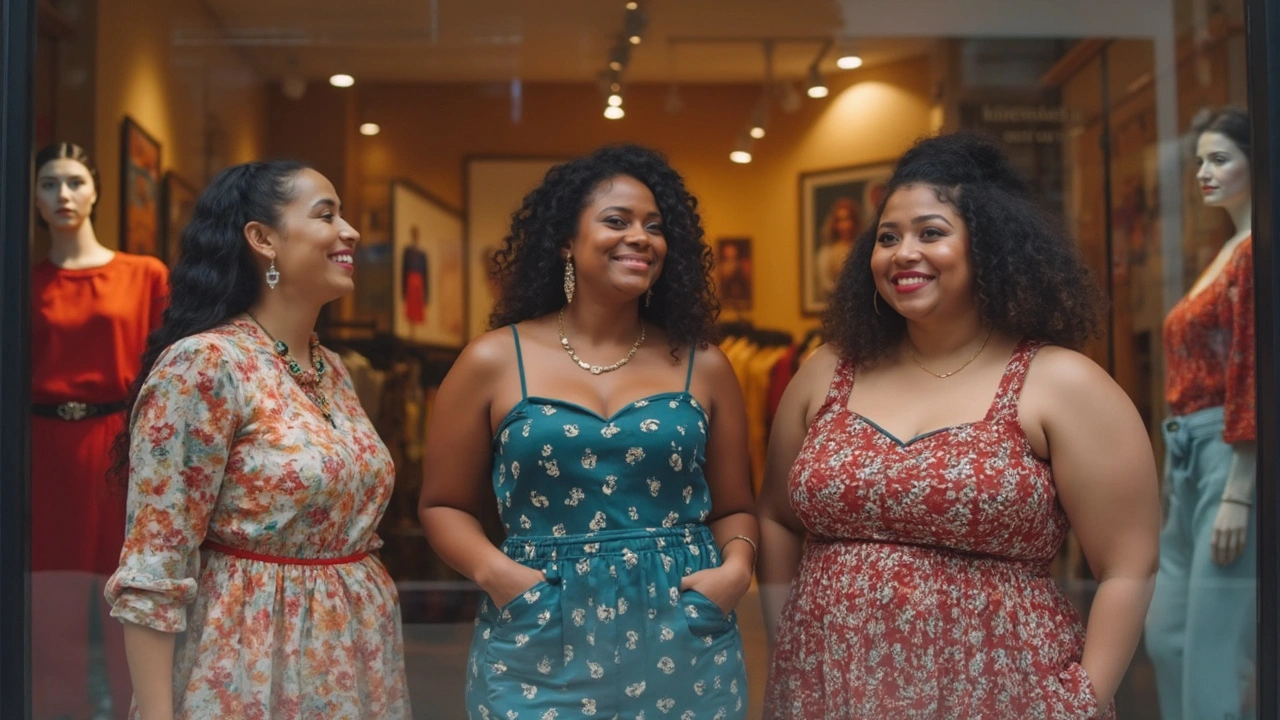
The Future: What’s Next in Fashion Inclusivity?
If the last three years prove anything, it’s that fashion inclusivity isn’t stalling—it’s charging ahead. Some brands now let shoppers filter runway images by model size on their websites. Runway sizing in Europe is slowly inching towards a new norm, and the British Fashion Council launched an official “Diversity in Design” award recognising stores pushing authentic, size-inclusive lines. London’s 2025 fashion week drew its highest attendance from 18-25 year olds in five years, with 41% reporting they attended because of “body-positive” line-ups. It’s a good sign that this momentum has traction beyond hashtags and ad campaigns.
| Year | UK Brands with Curve Ranges (%) | Runway Models Over Size 12 (%) | Women Reporting Increased Confidence (%) |
|---|---|---|---|
| 2019 | 21 | 2 | 27 |
| 2022 | 33 | 11 | 52 |
| 2025 | 58 | 20 | 73 |
The best tip I can give anyone following this wave? Don’t settle for less. Find brands that show real bodies, loudly and proudly. Support campaigns that feature a range of shapes—and don’t be afraid to voice your feedback. If a store hides its plus range away, ask for it at the front window. Tag brands you love when you see a great ad featuring *curvy models*—they really do listen. The more we normalise variety, the less anyone will ever have to feel like they’re ‘the wrong shape’ for style again. Challenging stereotypes isn’t just for the runway or Instagram. It’s for your own wardrobe, confidence, and the world you help shape when you demand more. Change rarely happens quietly. And right now? The fashion industry is all ears.
